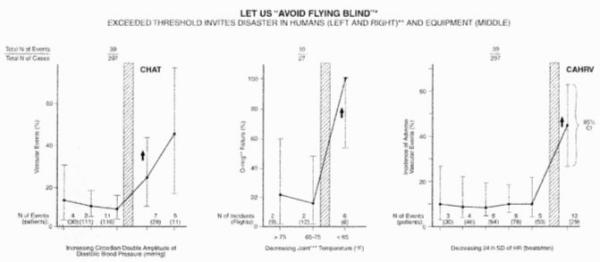Figure 16.

Disaster can result from literally and figuratively neglecting the range of operational environmental temperatures or in biology, the "normal range". For a relatively wide range of temperatures, a piece of equipment may be safe to use, but once temperature drops below a threshold, the likelihood of problems increases. The situation that led to the Challenger disaster (middle) is compared with the non-linear elevation of cardiovascular disease risk associated with a decreased heart rate variability (gauged by the standard deviation) (right) and also with an overswinging of blood pressure (CHAT) (left), also exhibiting a nonlinear behavior. Note that the increase in morbid events follows only after a threshold is exceeded, a nonlinear behavior that may have delayed the recognition of these risks. The use of chronomics is particularly indicated in populations at a high vascular disease risk.
